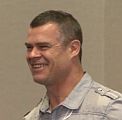BALANCING ACT – H20 AND HEALTHY STREAMS: “When I look back at our history, I think wow, how did we do so much applied research. We had a need and Hans Schreier had grad students who were interested in doing the research. Win-win,” stated Richard Boase, career environmental champion within local government in British Columbia

“At a critical moment, members of the Partnership for Water Sustainability team would have an idea around a research theme that supported our hypotheses. And as often happened, I was the arm that had the energy and willingness to take on the research, apply new science in North Vancouver, and get the work done,” stated Richard Boase. The Partnership brought funding to the table, UBC’s Hans Schreier provided grad students and brought in other professors, and North Vancouver provided the case studies.










